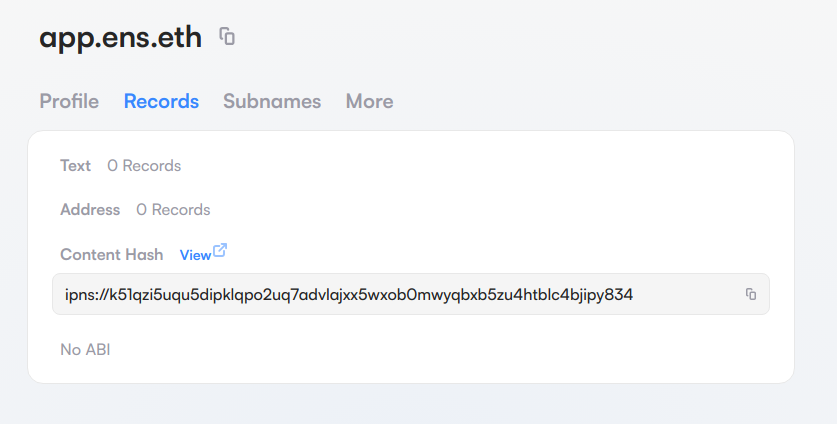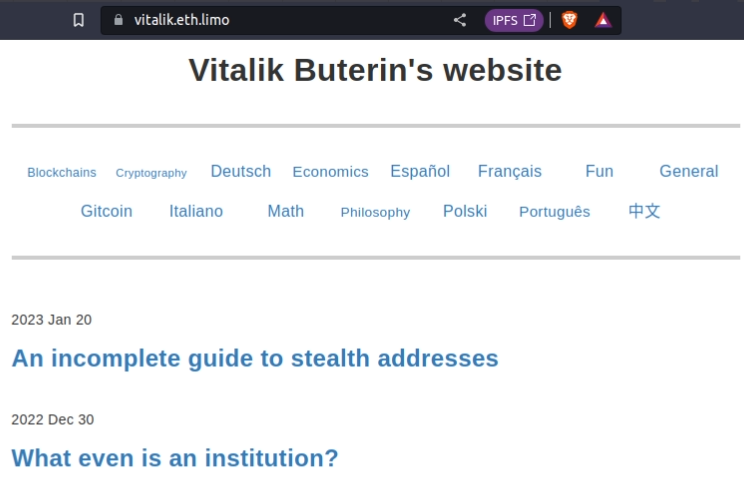Mirror DNS app to an ENS dApp - ENS App Manager (app.ens.domains)
In this example, we will learn how to use the exact same IPFS location to host static website content for both a DNS name, and an ENS name. This negates the need for hosting files on a traditional web server or cloud infrastructure. In this scenario, an ENS .eth name can point its content record to the same exact IPFS location where the DNS domain retrieves IPFS content using DNSLink.
The ENS Content Record Hash
The ENS content record is used to store the location of decentralized content. The content hash record supports multiple storage protocols including IPFS/IPNS, Arweave, Onion, Sia, and Swarm. For more information, please see ENSIP-7: Contenthash field

Notice the location of the decentralized content: ipns://k51qzi5uqu5dipklqpo2uq7advlajxx5wxob0mwyqbxb5zu4htblc4bjipy834
Using the LIMO Resolver
The ETH.LIMO project is an ENS gateway that resolves ENS content records to their IPFS/IPNS/Skynet locations. The service operates as a public good to make resolving dWeb content hashes stored in ENS records to easily resolve and display their content.

Other IPFS/IPNS Gateways
A few browsers like Brave and Opera as well as browsers using the Metamask extension can resolve .eth content records natively without using .LIMO. This is possible because the browser is configured to use an IPFS gateway to resolve decentralized content like IPFS locations.